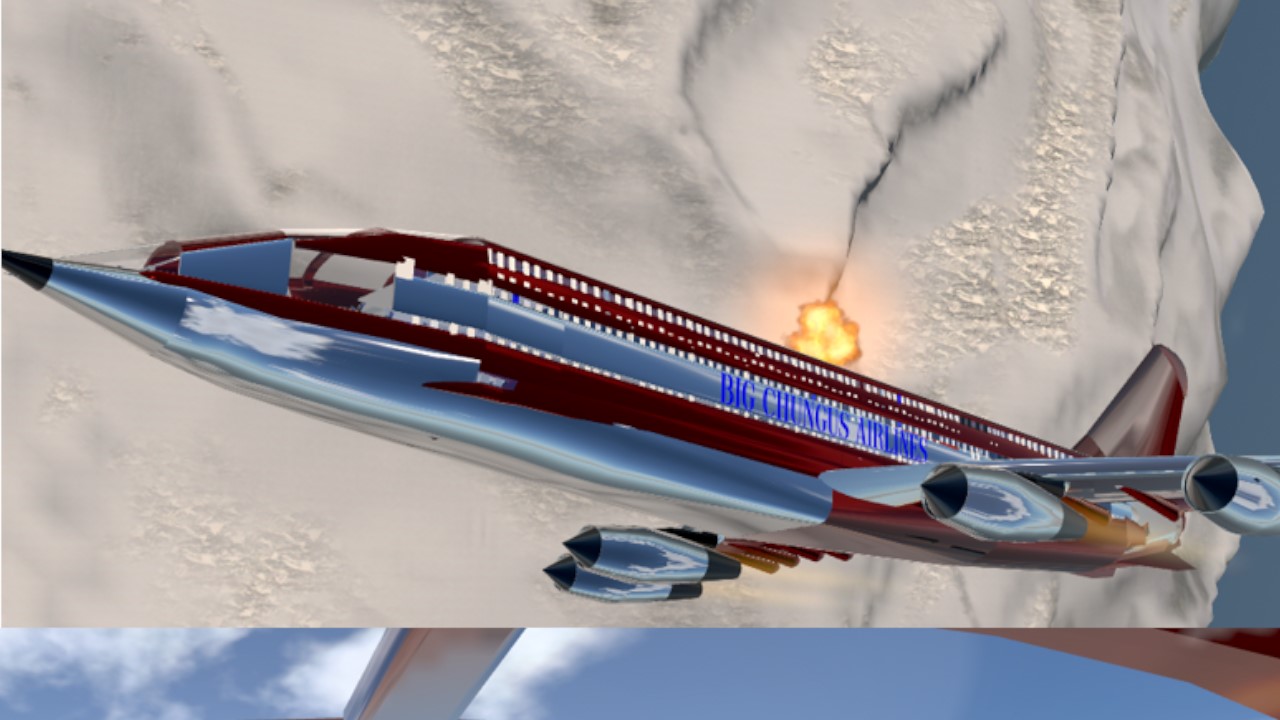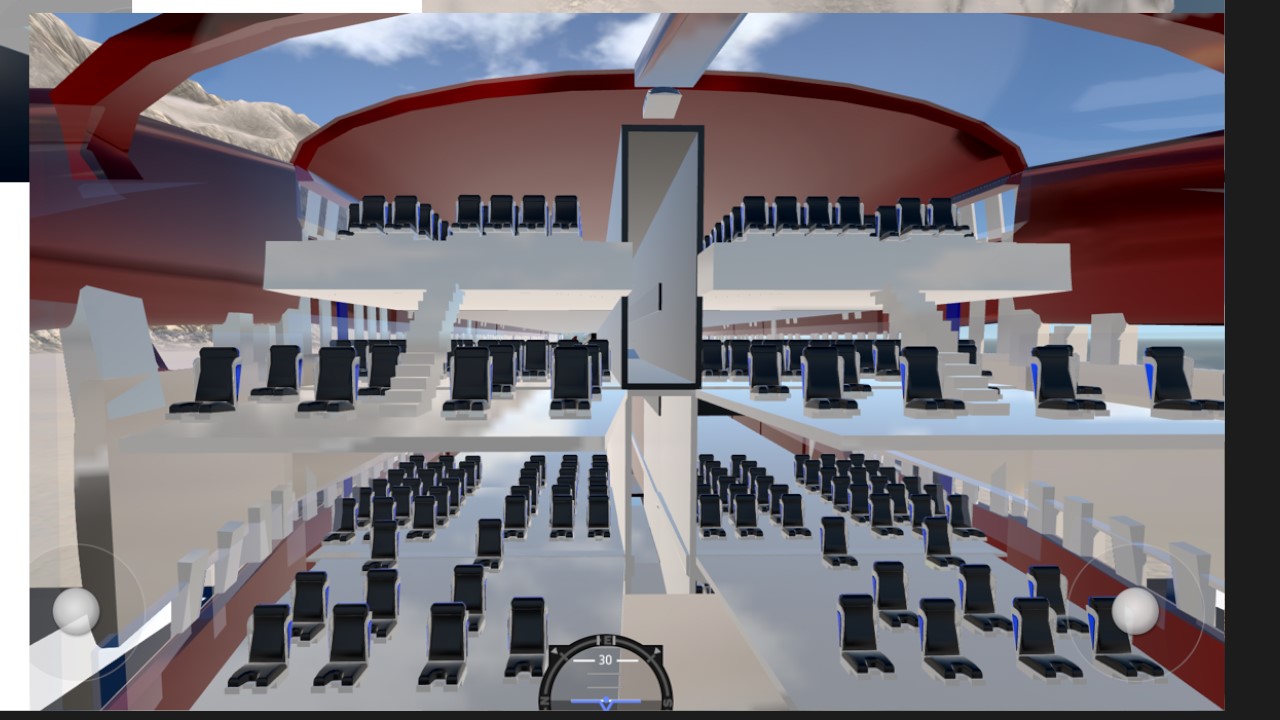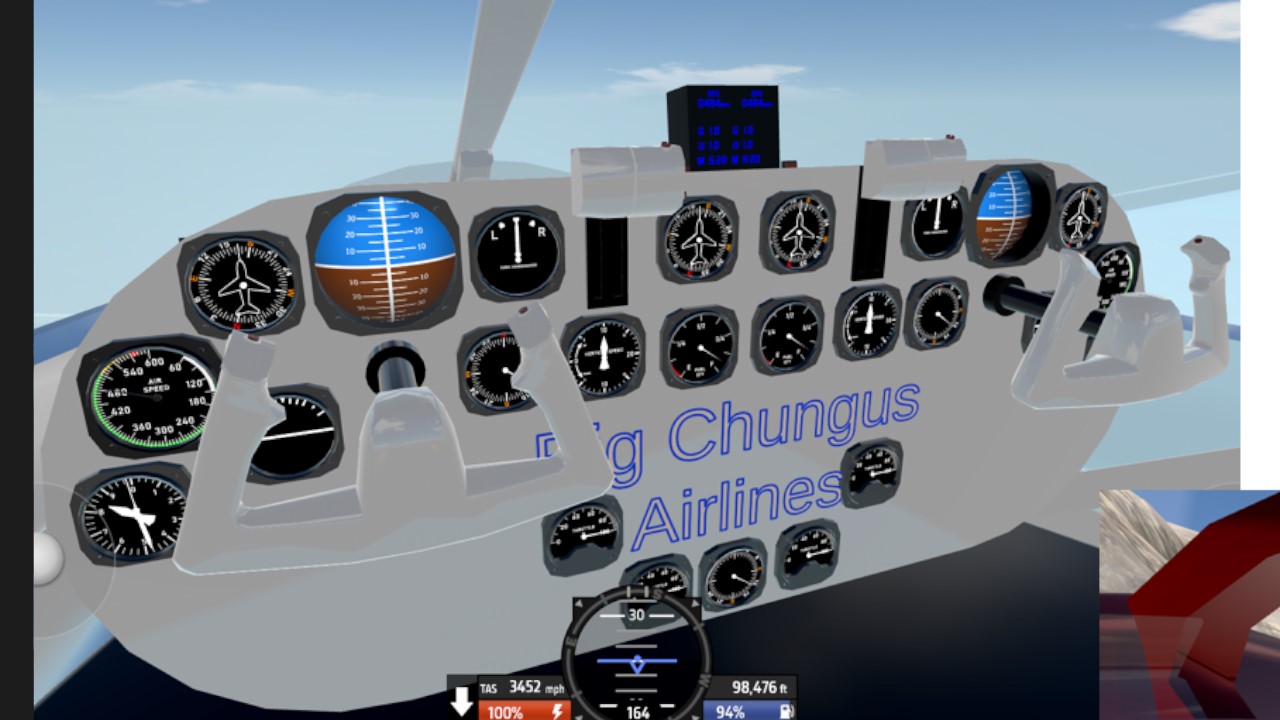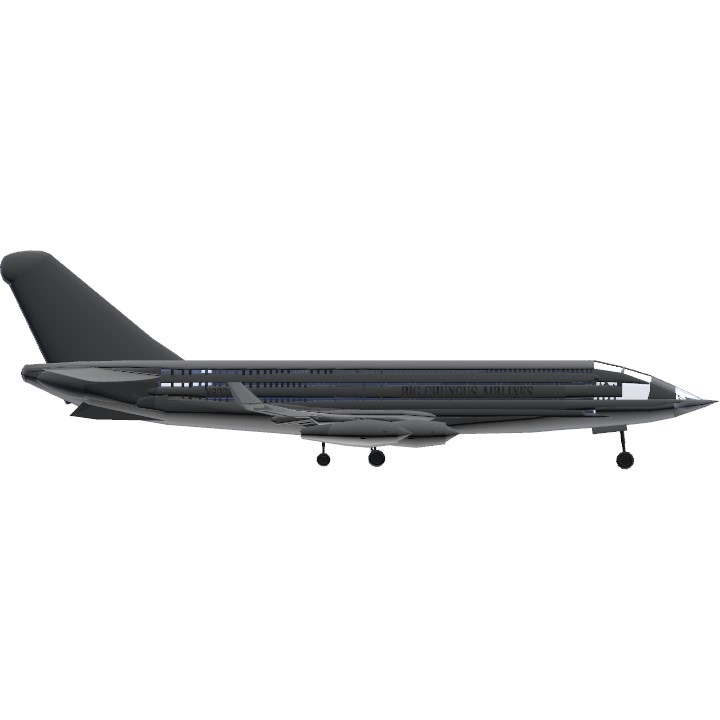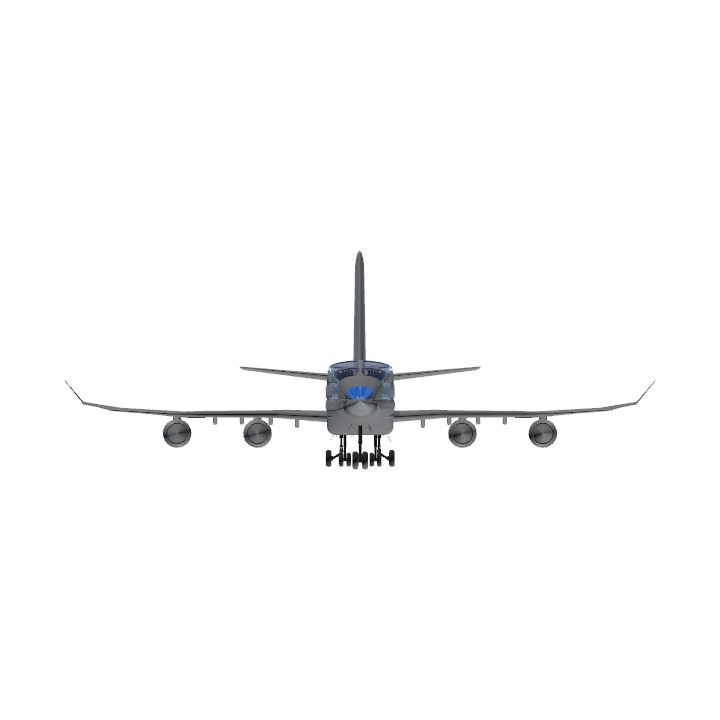In 1994, Avro industries began development of an extremely large, wide-widebody airliner with duel capability in the military market. The goal was to fit around 4500 passengers or 6000 troops into an extremely large, extremely fast airliner that could fly anywhere in the world at speeds that would justify its titanic operating costs and even more titanic acquisitional price. Goals of 17,000 miles of range, high speed cruises of over 3000 mph, and ultrahigh flight, far removed from the dangers of surface to air missiles, manned fighters, or even drones, at the outer limits of what was possible with conventional control surfaces were all met with flying colors.
Exotic materials such as unobtanium and vibranium were used to resist the incredible temperatures created by the heat of flight at these speeds. To power such a large aircraft, engines that far exceeded the thrust output of even the largest and most modern high bypass turbofan engines were required. Rolls Royce obtained technical data from the Pratt & Whitney J58 turbojet program in order to better understand how to make an engine that operated most efficiently at high speeds under constant afterburner. Using modern day technologies, they were able to apply these design concepts into a more efficient, low bypass turbofan, which was named the Torridge-3, a titan of a motor with an integrated afterburning section and variable position shock cone for effective flight at high speeds and altitudes.
On a test stand, over 300,000 pounds of thrust with afterburner were obtained, but in order to maximize the lifespan of the components and provide a high level of reliability in typical airline service, the production versions are rated at 296,749 pounds of thrust. To farther enhance UHA (Ultra high altitude) performance, the date from the F106 RASCAL project was used. Mass Injection Pre-Compressor Cooling (MIPCC), with an enormous tank that occupies part of the lower cargo hold, enables operation in conditions beyond the capabilities of a standard turbine engine. The last design challenge was making an aircraft so large and heavy safe at low speeds and altitudes, and capable of subsonic cruises in conditions where sonic booms were prohibited. A variable sweep wing was impossible due to the excessive weight penalty incurred by the mechanism (as much as a 30% reduction in either payload or fuel weight), and a large ogival delta as found on the Concorde would have led to excessive takeoff runs which far exceeded the runways of even the largest international airports. Thus a moderately swept, thin (for the size) wing with very effective high lift devices and a high wing loading. To enable gross weight landings, the ventral fins pivot up when the flaps are down and activate 1 way elevators on the ends, this enables better control at landing speeds without the drag penalty from a larger horizontal tail.
The most important design aspect is the double pressure hull. At high altitudes flown by fighters, the pilots access to oxygen is what ensures his survival if the pressurization system fails. Pressure suits are worn above 50k feet to prevent the adverse effects of exposure at those altitudes. Thus, the FAA required Avro to make the Empire survivable for the passengers even if pressure was lost. To offer pressure suits to all 5000 passengers wouldn't have been possible, so while flight attendants and pilots have them, the aircraft itself has a redundant double hull. The outer hull normally pressurizes through the inner hull using a system of ducts, but if this is compromised, the inner hull has a separate pressurization system that takes over, providing enough to ensure survival while the aircraft makes an emergency dive towards safe altitudes. The same system works if the inner hull is damaged, but this is minimized by the use of armor plating in the cargo area which would prevent even a substantial fire from melting and compromising the system before the fire extinguishing system kills it. In addition, sensors arranged in a grid throughout both pressure hulls detect a break in the circuit they form (a hole or tear), and this system is capable of precisely identifying where the breech is and notifying the aircrew. Further increasing redundancy is a very thin layer of ablative armor around the entire aircraft cabin, which serves as a heatsink and can take light impact damage without damaging the actual aircraft skin. This was demonstrated by accident when Avro test pilots strayed into the airspace of Russia during a high speed test and were hit by several guided missiles without significant damage.
17,000 mile range max speed cruise. 98,000ft, mach 5.
10,000ftm initial climb from ground, 6 minutes to 100,000 feet
True wing loading 135 pnds per square ft.
Specifications
General Characteristics
- Created On Windows
- Wingspan 338.1ft (103.1m)
- Length 411.6ft (125.5m)
- Height 125.4ft (38.2m)
- Empty Weight 1,098,286lbs (498,175kg)
- Loaded Weight 1,771,059lbs (803,340kg)
Performance
- Power/Weight Ratio 0.669
- Wing Loading 88.4lbs/ft2 (431.8kg/m2)
- Wing Area 20,026.9ft2 (1,860.6m2)
- Drag Points 74269
Parts
- Number of Parts 1551
- Control Surfaces 13
- Performance Cost 6,876

